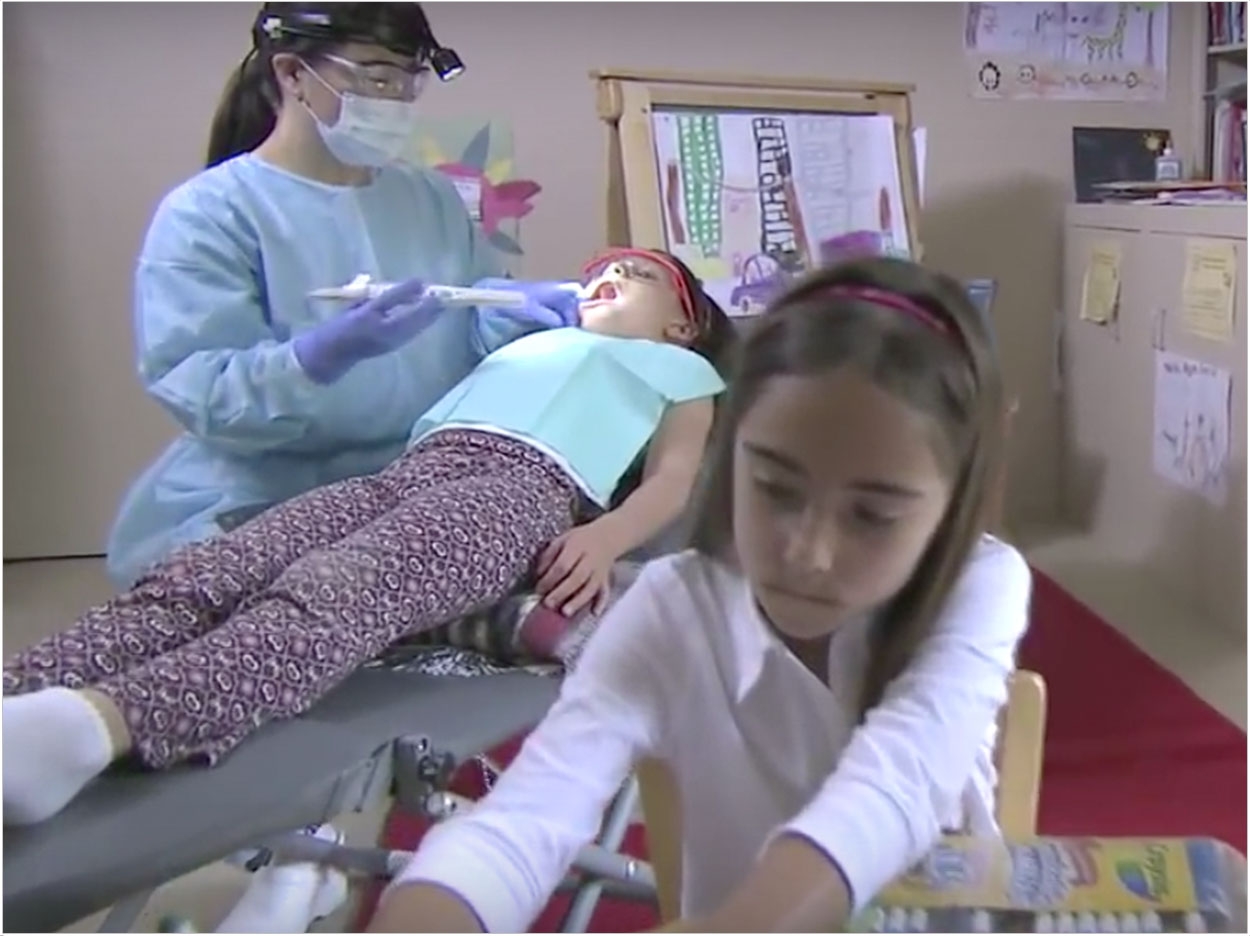
Thanks to technology, patients no longer need to physically visit the dentist’s office. Now, dental professionals can treat patients wherever they may be, such as schools, nursing homes, and long-term care facilities—and the University of the Pacific Arthur A. Dugoni School of Dentistry has demonstrated that this model can be effective.
The virtual dental home uses telehealth technology to link specially trained dental hygienists in the community with dentists elsewhere in offices and clinics. So far, the model has been used in 50 California Head Start preschools, grade schools, community and senior centers, and residential care facilities for people with disabilities. Oregon, Hawaii, and Colorado also are piloting the system.
“Our 6-year demonstration project confirms that this is a safe, effective way to bring care to people who need it,” said Paul Glassman, DDS, MA, MBA, professor of dentistry at the school and director of the Pacific Center for Special Care. In fact, the Pacific Center developed the teledentistry system and has evaluated it in treating more than 3,000 patients across California since 2010, supported by more than $5.5 million in various grants.
“Basing a virtual dental home in a school, a nursing home, or other community setting allows dental hygienists to prevent or treat the majority of oral health problems on site and also brings prevention information to patients, families, and caregivers,” said Glassman. “Finally, it connects on-site care in the community to dentists in dental offices.”
These hygienists perform fluoride varnishes, cleanings, scalings, replanings, prophys, sealants, and, sometimes, interim therapeutic restorations. They also collect full sets of digital records such as x-rays, charting, and photographs that are sent electronically to a consulting dentist. Only about a third of these cases require referral to the dentist for additional work beyond what the hygienist can perform.
Harmon Johnson Elementary School in North Sacramento, where almost 100% of the students are eligible for Medi-Cal, was one of the first virtual dental homes. The part-time, grant-funded dental hygienist there cleans teeth, treats small cavities, and teaches students about brushing, flossing, and tooth-friendly nutrition. The hygienist also gives away free toothbrushes, with as many free replacements as needed.
“Our students and families are excited because the preventive dental care takes place at school, a safe and caring learning environment that’s a second home to them. There are smiles all around, even among the staff,” said Michelle Rivas, president of the Twin Rivers Unified School District Board of Trustees.
“When children have less need to travel to a dental office, they are less likely to miss hours of critical instructional time in the classroom,” Rivas said. “Being able to receive preventive care will also help keep them healthy and better able to learn.”
“Results from the research further demonstrate the benefits of this oral healthcare delivery system and how this program can reach children and communities that would otherwise likely go without,” said Evan Low, a member of the California Assembly and author of AB 648, a bill now before the legislature that would provide $4 million in funding to expand virtual dental homes statewide.
In a 2014 report, the California State Auditor found that there were too few dentists to serve children enrolled in Medi-Cal in 32 of the state’s 58 counties. Also, 5 counties had no active Medi-Cal dentists. In 11 counties, not a single dentist accepted new Denti-Cal patients. Additionally, 24% of all children in California complete grade school without ever seeing a dentist. And in 2013, only 41% of children eligible for Medi-Cal received any dental services.
However, the 6-year study found that examining dentists using the telehealth system determined that approximately two thirds of children and about half of seniors and people with disabilities in long-term facilities can have their oral health needs met by dental hygienists in the community without needing to see a dentist in person.
Also, no adverse outcomes were reported for any of the procedures performed by hygienists. The virtual dental home system delivered significantly more prevention and early intervention at less cost per patient than the current Denti-Cal system. And, projections based on the demonstration indicate the system could be financially viable in the Denti-Cal system.
“The virtual dental home helps bring critical, comprehensive care to children where they are,” said Mayra Alvarez, president of the Children’s Partnership. “With care in the community by oral health providers working at the top of their expertise, we are helping to better meet the diverse needs of California’s children and families.”
Related Articles
Virtual Dental Homes Improve Care and Cut Costs
Report Urges Expansion of Virtual Dental Homes
CDA Offers Advice on Virtual Dental Home Participation












